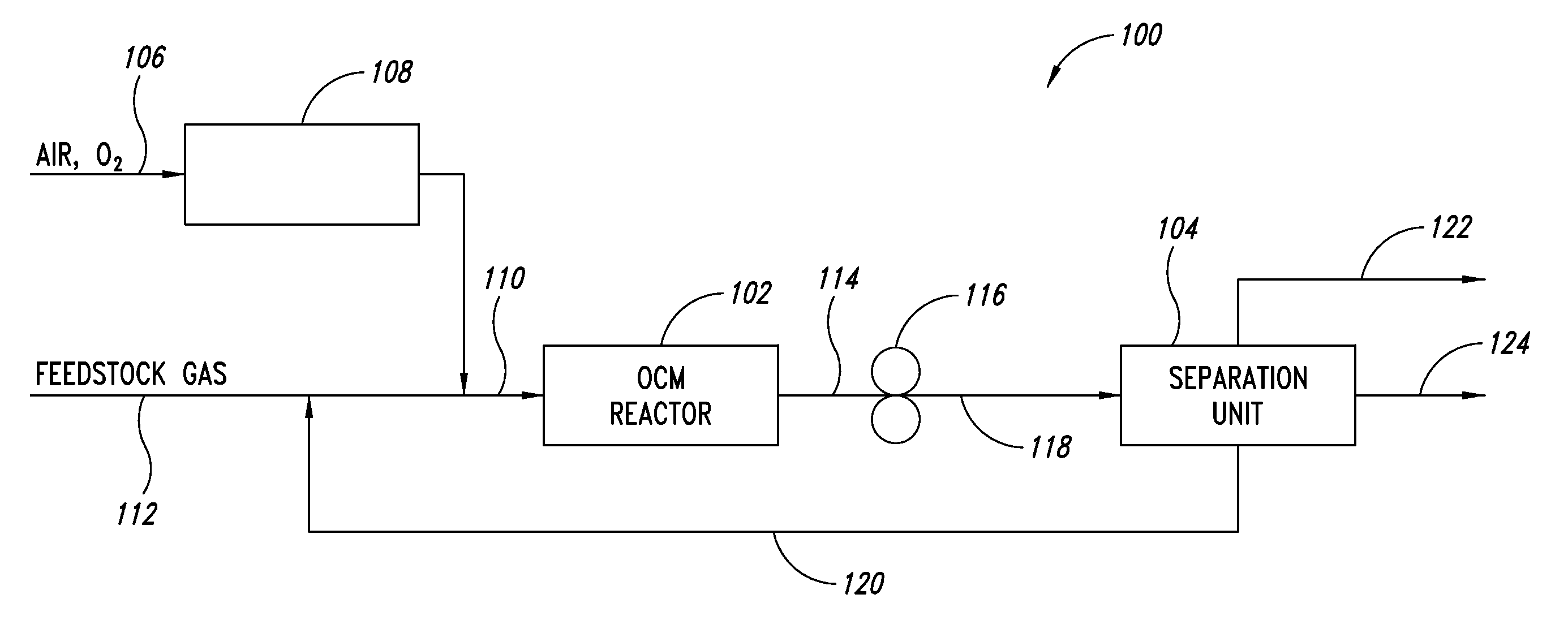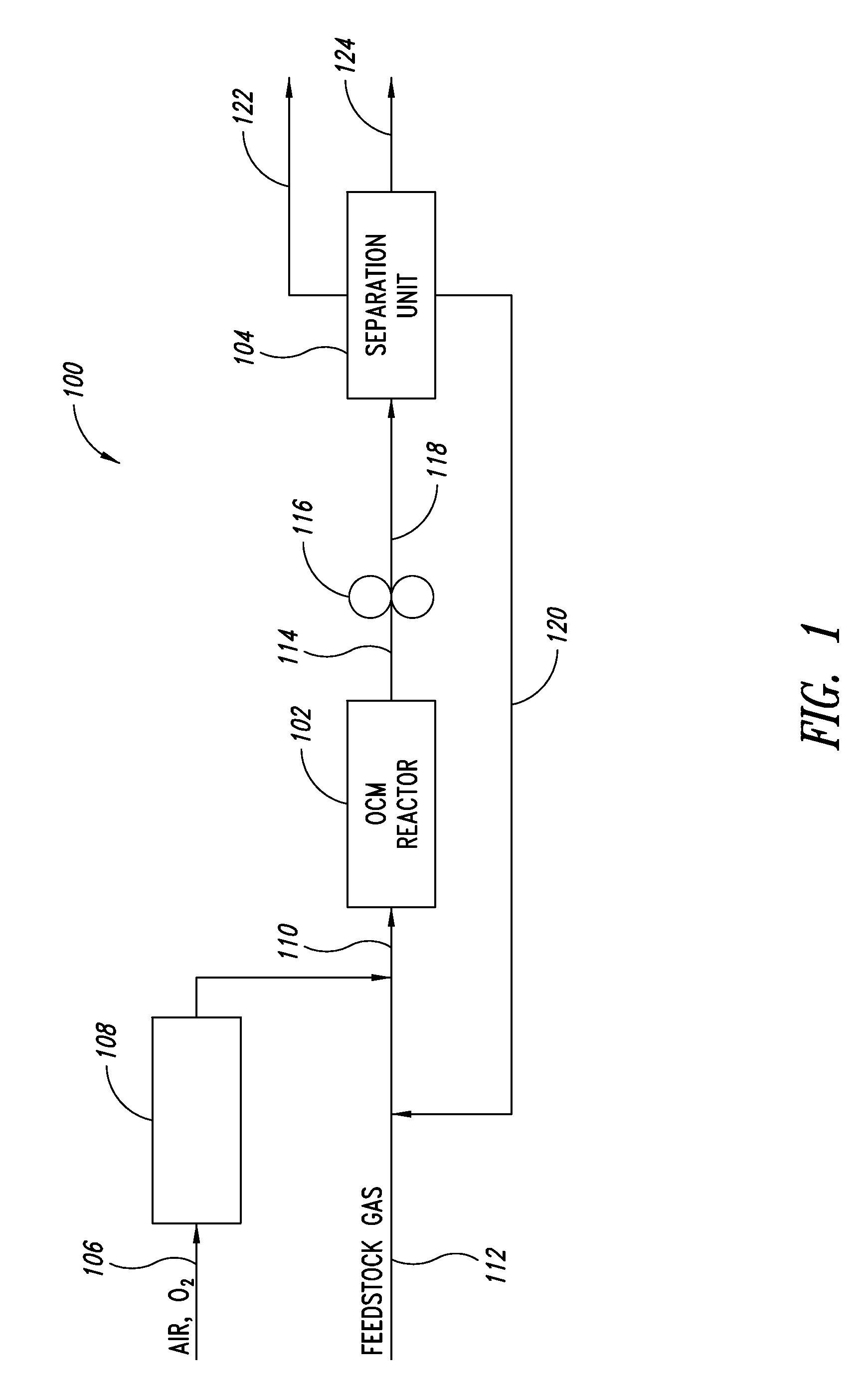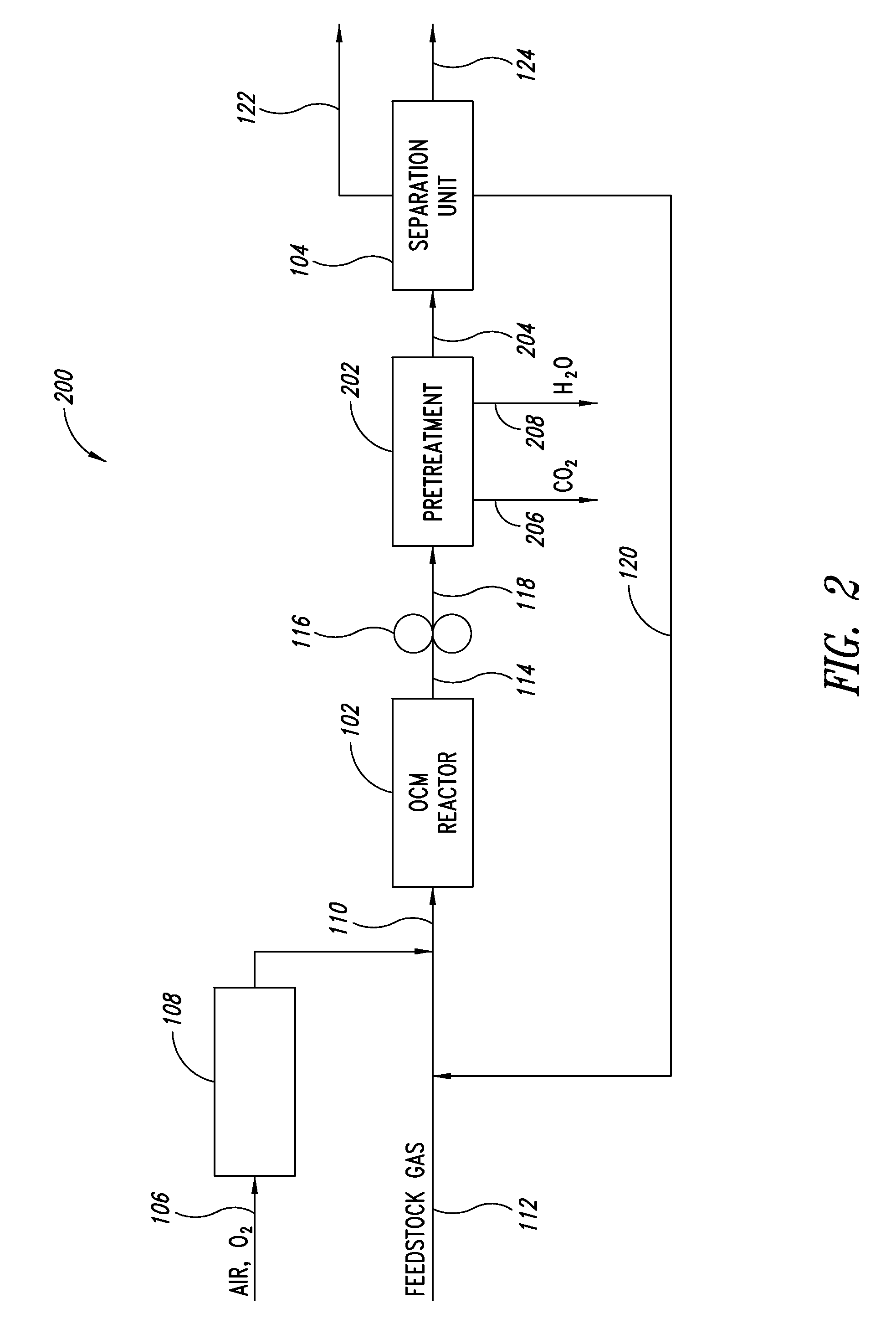Process for separating hydrocarbon compounds
a technology of hydrocarbon compounds and hydrocarbon compounds, which is applied in the direction of cold treatment separation, liquefaction, lighting and heating apparatus, etc., can solve the problems of reducing the production volume of ethylene, generating considerable quantities of greenhouse gases, and reducing the carbon dioxide content, so as to reduce the content of hydrogen sulfide and the effect of reducing the content of carbon dioxid
- Summary
- Abstract
- Description
- Claims
- Application Information
AI Technical Summary
Benefits of technology
Problems solved by technology
Method used
Image
Examples
Embodiment Construction
[0083]In the following description, certain specific details are set forth in order to provide a thorough understanding of various disclosed embodiments. However, one skilled in the relevant art will recognize that embodiments may be practiced without one or more of these specific details, or with other methods, components, materials, etc. In other instances, well-known structures associated with specific unit operations, such as fluid transport, heat transfer, mass transfer, thermodynamic processes, and mechanical processes, e.g., fluid transportation, filtration, evaporation, condensation, gas absorption, distillation, extraction, adsorption, drying, gas liquefaction, and refrigeration have not been shown or described in detail to avoid unnecessarily obscuring descriptions of the embodiments.
[0084]Unless the context requires otherwise, throughout the specification and claims which follow, the word “comprise” and variations thereof, such as, “comprises” and “comprising” are to be c...
PUM
| Property | Measurement | Unit |
|---|---|---|
| pressure | aaaaa | aaaaa |
| pressure | aaaaa | aaaaa |
| temperature | aaaaa | aaaaa |
Abstract
Description
Claims
Application Information
 Login to View More
Login to View More - R&D
- Intellectual Property
- Life Sciences
- Materials
- Tech Scout
- Unparalleled Data Quality
- Higher Quality Content
- 60% Fewer Hallucinations
Browse by: Latest US Patents, China's latest patents, Technical Efficacy Thesaurus, Application Domain, Technology Topic, Popular Technical Reports.
© 2025 PatSnap. All rights reserved.Legal|Privacy policy|Modern Slavery Act Transparency Statement|Sitemap|About US| Contact US: help@patsnap.com



